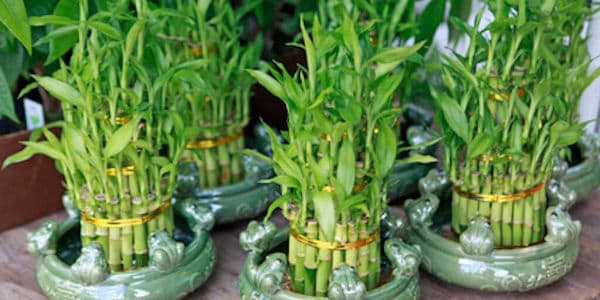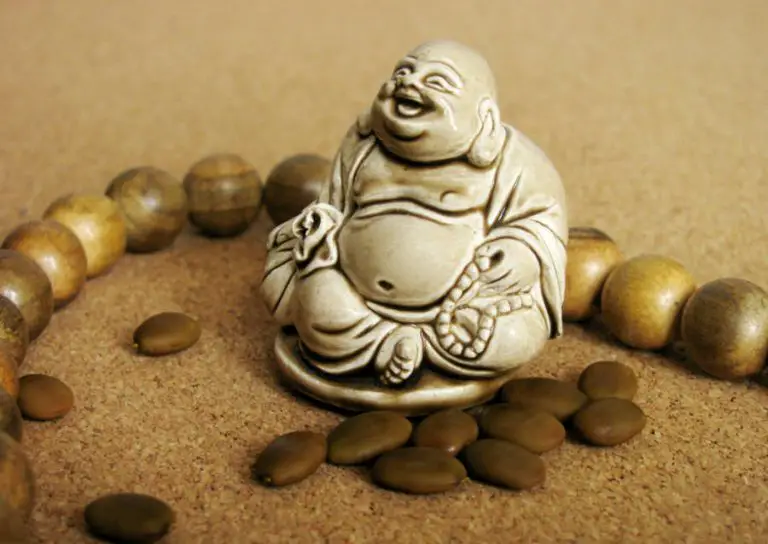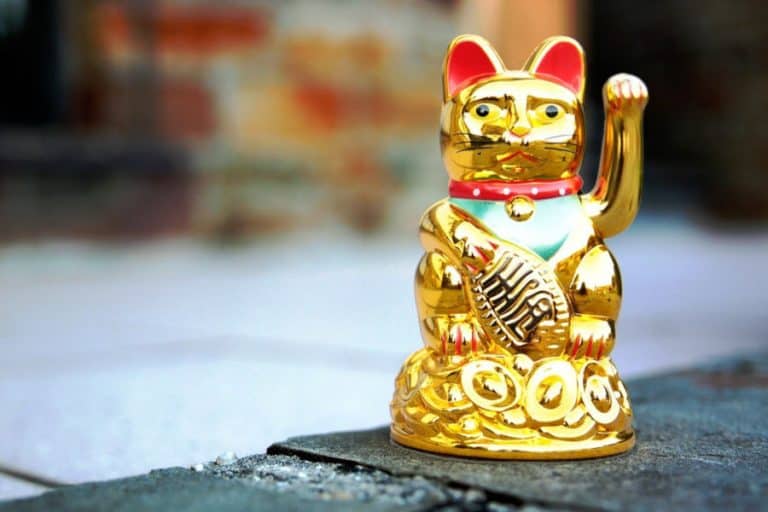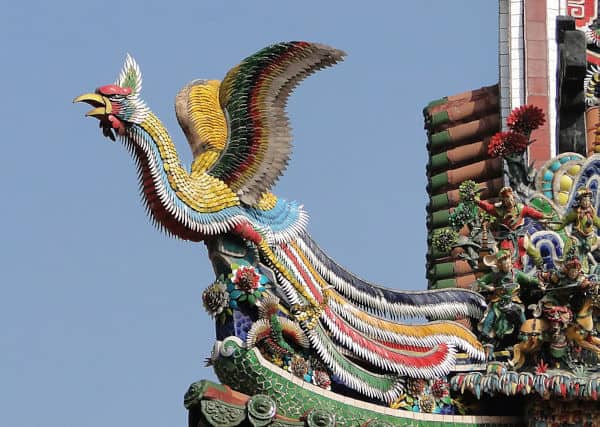Lucky bamboo is one of the most popular Feng Shui charms that is often sought after by many Feng Shui enthusiasts.
The lucky bamboo is a real bamboo plant, typically from the species Dracaena sanderiana. It is relatively small and you can put it in a pot and place it indoors as a Feng Shui charm, and it is quite aesthetically pleasing so it can also act as a decoration. The lucky bamboo has been popular for centuries not only in China but in various other eastern cultures like Japan.
As a Feng Shui charm, lucky bamboo is believed to circulate positive chi energy in the surrounding area where it’s placed. Lucky bamboo can also function as a Feng Shui cure to activate stagnant energy and creates circulating flow, turning this “stuck” energy into positive auspicious chi and circulating it into the whole house or workspace.
To enhance this benefit, the lucky bamboo must be taken care of, and we have to ensure it stays healthy to maintain its energy circulation. Another important consideration is to arrange the lucky bamboo and other ornaments in order to achieve a balance between the five Feng Shui elements, that is:
- The lucky bamboo plant, representing wood element
- Stones or pebbles, representing earth element
- The pot/container, representing metal element. You can attach a metal figure or coin to the container if it’s made of glass or other material.
- The growing medium, representing water element
- The red ribbon tied around bamboo stalks/container, representing fire element
How Many Stalks Should the Lucky Bamboo Have?
The number of stalks of the lucky bamboo would affect its function and performance as a Feng Shui cure:
1 stalk
A lucky bamboo with just a single stalk represents commitment or truth, with the number 1 symbolizing simplicity in Chinese culture. As a Feng Shui cure, it’s not really popular at the moment, but a certain application of a single stalk of lucky bamboo is implemented if you are wishing for the truth to prevail.
2 stalks
The number 2 is believed as a lucky number in Feng Shui and Chinese culture, as the old Chinese saying goes “Good things come in pairs”( 好事成双/hao shi cheng shuang). 2 stalks of lucky bamboo are often presented to newlyweds, believed to represents love and familial harmony.
3 stalks
The number three represents happiness, and typically a lucky bamboo plant with three stalks is a wish for a new beginning. Typically presented as a New Year or birthday gift, believed to enhance luck, happiness, and prosperity.
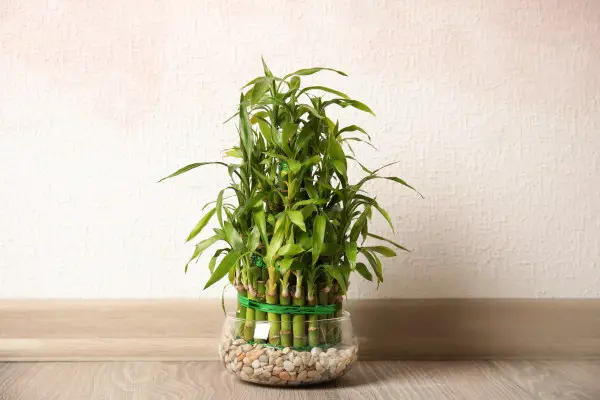
5 stalks
Representing the five elements of Feng Shui: water, fire, metal, wood, and earth, and so 5 stalks of lucky bamboo are believed to symbolize balance, peace, power, and harmony. Very popular as a Feng Shui charm, believed to help the owner in achieving their goals with positive, balanced energy.
6 stalks
Six symbolizes blessings in Feng Shui, and so six stalks of lucky bamboo are believed to attract more happiness in life, career success, and harmony at home.
7 stalks
The number seven is widely considered as a lucky number, representing 7 days in a week and 7 colors in a rainbow. 7 stalks represent harmony and togetherness, so it’s believed to bring more love and romance to your relationship.
8 stalks
8, as we know, is a very important lucky number in Chinese culture and other Asian cultures. Believed to attract prosperity, wealth, and fortune in general. 88 stalks of lucky bamboo are also often used to represent “double fortune”, and 888 for “triple fortune”.
21 stalks
Represents harmony and success in wealth, happiness, health, and relationship.
99 stalks
Symbolizes longevity in relationships (99 years).
289 stalks
Another popular configuration believed to attract good fortune and prosperity
🍀 Our “Feng Shui Master” app is your trusted companion, offering a useful guide to implementing Feng Shui principles. Try it now!
Where Should I Place The Lucky Bamboo?
According to Feng Shui rules, it’s best to place a lucky bamboo plant in the East or Southeast direction of the house/workplace for the best results.
The Southeast direction is considered the best position if you want to attract wealth with the lucky bamboo, while the East direction is the best choice if you want to wish for health and protection from negative energy for your whole family.
If you want to improve the flow of energy, consider placing the lucky bamboo plant in the center of your dinner table, which is believed to attract more abundance while also creating a pleasant atmosphere in the dining area.
If you’d like to enjoy more harmony and happiness, consider placing a lucky bamboo in your kitchen, especially if your kitchen is located in the East or Southeast section of your house. If your kitchen is located in a different section, then you can choose the East or Southeast corner of the kitchen.
While you can place the lucky bamboo plant in most rooms inside the house, making it quite a versatile charm, you should not place it in your bedroom. The Yang energy projected by the plant might overwhelm your bedroom, preventing you from enjoying proper rest.
Related Reading: Chinese Elm Bonsai Tree – Styles, Care, Pruning, Problems –Opens in new tab
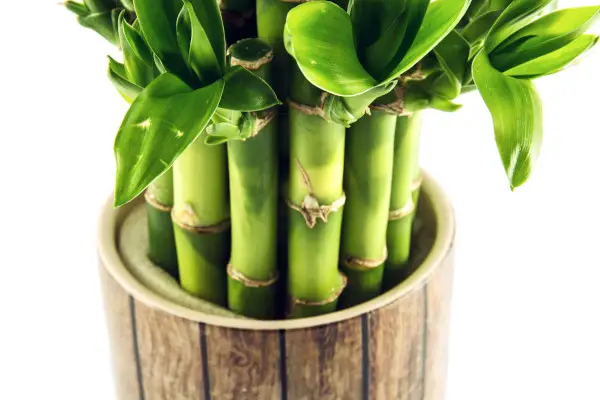
Is it Good To Present Lucky Bamboo as Gifts?
Yes!
In fact, lucky bamboo is a popular present for occasions like birthdays, new year, weddings, or the birth of a child in China and other eastern cultures. Presenting lucky bamboos as a gift is considered wishing the recipient good fortune.
Take a look at these “Lucky Bamboo” – Aff.link
Caring for The Lucky Bamboo Plant
Taking care of a lucky bamboo plant shouldn’t require too much effort or special/expensive maintenance. The general principle is to ensure the lucky bamboo stays healthy and clean so it can grow properly.
As with any other plant, make sure the lucky bamboo gets enough sunlight during the day. It can survive with relatively low light, but it won’t grow properly. Make sure it’s placed in a location that is exposed to natural sunlight, if possible, and rotate its position daily so it’s evenly bathed with sunlight.
Make sure to water the lucky bamboo regularly so that the water level stays above the roots of the bamboo. Replace the water with new water when the water smells bad to ensure it stays healthy.
Want to learn more about Feng Shui? Take a look at these Courses and Books – Aff.link
Stay in Touch
 Join our newsletter by using the forms on this website or click here!
Join our newsletter by using the forms on this website or click here! Follow us on Google News
Follow us on Google News Follow us on Facebook
Follow us on Facebook
Feature Image from Depositphotos

